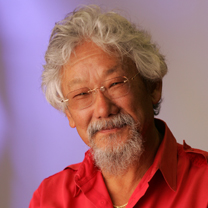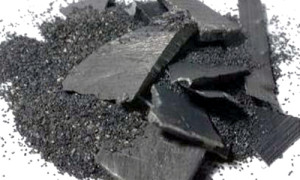Will Thorium Save Us from Climate Change?
ENERGY, 17 Feb 2014
Dr. David Suzuki, EcoWatch – TRANSCEND Media Service
 As knowledge about climate change increases, so does demand for clean energy. Technologies like solar, wind, hydro, geothermal, tidal and biofuels, along with energy-grid designs that will help us take advantage of renewables, are part of the equation, as is conservation.
As knowledge about climate change increases, so does demand for clean energy. Technologies like solar, wind, hydro, geothermal, tidal and biofuels, along with energy-grid designs that will help us take advantage of renewables, are part of the equation, as is conservation.
But many argue that, despite Fukushima and other disasters, nuclear is the best option to reduce carbon emissions fast enough to avoid catastrophic climate change. Because of problems with radioactive waste, meltdown risks and weapons proliferation, some say we must develop safer nuclear technologies.
Even eminent climate scientists like James Hansen claim we can’t avoid nuclear if we want to reduce greenhouse gas emissions. Hansen, a former NASA scientist, with Ken Caldeira of the Carnegie Institution, Kerry Emanuel of the Massachusetts Institute of Technology and TomWigley of Australia’s University of Adelaide, wrote an open letter last year stating, “the time has come for those who take the threat of global warming seriously to embrace the development and deployment of safer nuclear power systems.”
What are “safer nuclear power systems?” And are they the answer?
Proposed technologies include smaller modular reactors, reactors that shut down automatically after an accident and molten salt reactors. Some would use fuels and coolants deemed safer. (Industry proponents argue the low incidence of nuclear accidents means current technology is safe enough. But the costs and consequences of an accident, as well as problems such as containing highly radioactive wastes, provide strong arguments against building new reactors with current technology).
One idea is to use thorium instead of uranium for reactor fuel. Thorium is more abundant than uranium. Unlike uranium, it’s not fissile; that is, it can’t be split to create a nuclear chain reaction, so it must be bred through nuclear reactors to produce fissile uranium.

Though the technology’s been around since the 1950s, thorium hasn’t been proven on a commercial scale. Countries including the U.S., China, France and Russia are pursuing it, but in 2010 the U.K.’s National Nuclear Laboratory reported that thorium claims are “overstated.”
Thorium-fuelled reactors produce less waste, and while some trace elements in spent uranium fuels remain radioactive for many thousands of years, levels in spent thorium fuels drop off much faster. China and Canada are working on a modified Canadian design that includes thorium along with recycled uranium fuel. With the right type of reactor, such as this design or the integral fast reactor, meltdown risks are reduced or eliminated.
Thorium can be employed in a variety of reactor types, some of which currently use uranium—including heavy water reactors like Canada’s CANDU. But some experts say new technologies, such as molten salt reactors, including liquid fluoride thorium reactors, are much safer and more efficient than today’s conventional reactors.
So why aren’t we using them?
Although they may be better than today’s reactors, LFTRs still produce radioactive and corrosive materials, they can be used to produce weapons and we don’t know enough about the impacts of using fluoride salts. Fluoride will contain a nuclear reaction, but it can be highly toxic, and deadly as fluorine gas. And though the technology’s been around since the 1950s, it hasn’t been proven on a commercial scale. Countries including the U.S., China, France and Russia are pursuing it, but in 2010 the U.K.’s National Nuclear Laboratory reported that thorium claims are “overstated.”
It will also take a lot of time and money to get a large number of reactors on-stream—some say from 30 to 50 years. Given the urgent challenge of global warming, we don’t have that much time. Many argue that if renewables received the same level of government subsidies as the nuclear industry, we’d be ahead at lower costs. Thorium essentially just adds another fuel option to the nuclear mix and isn’t a significant departure from conventional nuclear. All nuclear power remains expensive, unwieldy and difficult to integrate with intermittent renewables—and carries risks for weapons proliferation.
If the choice is between keeping nuclear power facilities running or shutting them down and replacing them with coal-fired power plants, the nuclear option is best for the climate. But, for now, investing in renewable energy and smart-grid technologies is a faster, more cost-effective and safer option than building new nuclear facilities, regardless of type.
That doesn’t mean we should curtail research into nuclear and other options, including thorium’s potential to improve the safety and efficiency of nuclear facilities. But we must also build on the momentum of renewable energy development, which has been spurred by its safety, declining costs and proven effectiveness.
____________________________
Dr. David Suzuki is a scientist, broadcaster, author, and co-founder of the David Suzuki Foundation. He is Companion to the Order of Canada and a recipient of UNESCO’s Kalinga Prize for science, the United Nations Environment Program medal, the 2009 Right Livelihood Award, and Global 500. Dr. Suzuki is Professor Emeritus at the University of British Columbia in Vancouver and holds 27 honorary degrees from universities around the world. He is familiar to television audiences as host of the long-running CBC television program The Nature of Things, and to radio audiences as the original host of CBC Radio’s Quirks and Quarks, as well as the acclaimed series It’s a Matter of Survival and From Naked Ape to Superspecies. His written work includes more than 52 books, 19 of them for children. Dr. Suzuki lives with his wife, Dr. Tara Cullis, and family in Vancouver, B.C.
Visit EcoWatch’s NUCLEAR and RENEWABLE ENERGY pages for more related news on this topic.
DISCLAIMER: The statements, views and opinions expressed in pieces republished here are solely those of the authors and do not necessarily represent those of TMS. In accordance with title 17 U.S.C. section 107, this material is distributed without profit to those who have expressed a prior interest in receiving the included information for research and educational purposes. TMS has no affiliation whatsoever with the originator of this article nor is TMS endorsed or sponsored by the originator. “GO TO ORIGINAL” links are provided as a convenience to our readers and allow for verification of authenticity. However, as originating pages are often updated by their originating host sites, the versions posted may not match the versions our readers view when clicking the “GO TO ORIGINAL” links. This site contains copyrighted material the use of which has not always been specifically authorized by the copyright owner. We are making such material available in our efforts to advance understanding of environmental, political, human rights, economic, democracy, scientific, and social justice issues, etc. We believe this constitutes a ‘fair use’ of any such copyrighted material as provided for in section 107 of the US Copyright Law. In accordance with Title 17 U.S.C. Section 107, the material on this site is distributed without profit to those who have expressed a prior interest in receiving the included information for research and educational purposes. For more information go to: http://www.law.cornell.edu/uscode/17/107.shtml. If you wish to use copyrighted material from this site for purposes of your own that go beyond ‘fair use’, you must obtain permission from the copyright owner.